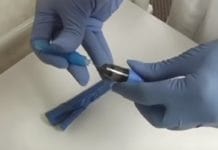Dental hygienists often fight against allowing health insurance companies to dictate treatment plans. They document, chart, probe, and appeal to get properly timed recall appointments covered for their patients. So, why do many offices allow the once per year insurance coverage on most dental plans to dictate the frequency of dental radiographs?
The ADA, in conjunction with the FDA, recently updated their radiograph exposure recommendations in March of 2019. They haven’t changed much since the initial report was issued in 2012. Still, many dental practices are unaware of the specific recommendations, or that they exist at all.
Bitewings once per year with a six-month recall has long been the norm in the dental profession. However, more and more patients are beginning to push-back against the exposure of radiographs purely out of routine. They are starting to ask for reasons and are speaking up to protect themselves against unnecessary radiation exposure.
The guidelines that the ADA presents come with a caveat: these are just guidelines. They do not stand alone and should serve as a supplemental reference that builds on a thorough exam and review of the patient’s medical history.
ALARA (As Low As Reasonably Achievable)
The ALARA principle should be followed when exposing anyone to radiation. It refers to the idea that when radiation is utilized, it is necessary to make every possible effort to limit the exposure to the patient. Oftentimes, clinicians only consider the ALARA principle when adjusting settings on their X-ray machine itself, but it goes beyond that.
The ALARA principle also states that one should be mindful of and consistent with the purpose of exposure. This means having clinical reasons for exposing radiographs at any appointment. So, what exactly is considered reasonable for which patients?
New Patients Being Evaluated for the Presence of Oral Diseases
Children with only primary dentition may require a combination of periapical/occlusal images and/or posterior bitewings if the proximal surfaces of the present teeth cannot be assessed visually or probed. If a child presents with open contacts, no radiographs may be necessary.
For children with mixed dentition, either posterior bitewings and a panoramic, or posterior bitewings and selected periapical images may be useful.
Adolescents and adults with completely permanent dentitions would most likely benefit from a full-mouth set of periapical radiographs if there is evidence of generalized disease or a dental history including extensive treatment. If no history or clinical indications are present, then panoramic and posterior bitewings, or selected periapicals and posterior bitewings are advised.
Recall Patients who Present with Clinical Caries or Elevated Caries Risk
Children (primary and mixed dentition), and adolescents are candidates for posterior bitewings every 6-12 months if proximal surfaces cannot be evaluated visually or with the use of a probe.
Adults are recommended to receive posterior bitewings between 6-18 months based on need, risk, and clinical findings.
Recall Patients who Do Not Present with Caries and Are Low Risk for Caries
Children with either deciduous or mixed dentitions may benefit from posterior bitewings for proximal surfaces that cannot be visually inspected or probed every 12-24 months.
Adolescents with complete permanent dentitions (except for erupted third molars) are advised to have posterior bitewings 18-36 months apart (or every 1 ½ to 3 ½ years).
Adults in this category can receive bitewings on a 24-36-month interval. (That’s 2 to 3 years between radiographs for adults with good oral health.)
Recall Patients with Periodontal Disease
For periodontal patients of all ages and dentitions, the ADA recommends clinical judgment be utilized when determining the frequency for bitewing radiographs and/or periapical images; it makes no specific frequency recommendations.
The full report includes other patient scenarios, such as edentulous patients, new and recall appointments for the purpose of monitoring dentofacial growth and development, and patients with implants, prostheses, and treated periodontal disease. The full version of the report, including a chart of the recommendations, can be found here.
Ultimately, the frequency of radiographs exposure must depend on the whole patient history, as well as any clinical considerations. Patients are learning more about what goes into health care and beginning to take on more agency when it comes to accepting treatments of all types. Dental hygienists are poised to educate patients on the effectiveness and safety of dental radiography and can do these things much more effectively if they can provide solid reasoning behind each exposure.
An important observation is that for several categories of patients, the frequency of radiographs is substantially lower than the typical once per year, whenever-it’s-covered-by-insurance norm. Therefore, we can gain our patients’ trust and help them make better decisions if we ourselves are equipped with case-specific knowledge of what is reasonably achievable.
Need CE? Check Out the Self-Study CE Courses from Today’s RDH!
Listen to the Today’s RDH Dental Hygiene Podcast Below:
References
- ALARA. Health Physics Society. Retrieved from http://hps.org/publicinformation/radterms/radfact1.html
- Dental Radiographic Examinations: Recommendations for Patient Selection and Limiting Radiation Exposure. American Dental Association. Retrieved from https://www.ada.org/~/media/ADA/Publications/ADA%20News/Files/Dental_Radiographic_Examinations_2012.pdf?la=en












